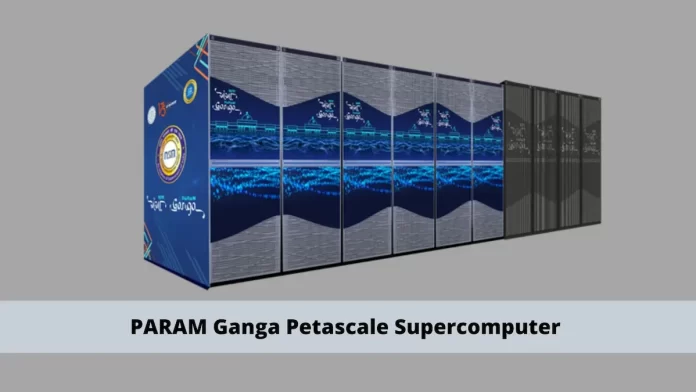In a historic moment, a Petascale Supercomputer named “PARAM Ganga” was on Tuesday installed at the IIT Roorkee as part of the National Supercomputing Mission (NSM).
The Param Ganga supercomputer with a supercomputing capacity of 1.66 Petaflops has been designed and commissioned by C-DAC under Phase 2 of the “build approach” of the NSM.
The availability of such a supercomputer will accelerate the research and development activities in multidisciplinary domains of science and engineering with a focus to provide computational power to the user community of IIT Roorkee and neighboring academic institutions.
Importantly, substantial components utilized to build this system are manufactured and assembled within India along with an indigenous software stack developed by C-DAC, which is a step further towards the Make in India initiative of the Government.
This national Supercomputing Facility at the IIT Roorkee campus was inaugurated on March 07, 2022, by Shri B.V.R. Mohan Reddy, Chairman, Board of Governors, IIT Roorkee in the gracious presence of senior officials from MeitY, DST, IIT Roorkee, and C-DAC.
What is National Supercomputing Mission?
The National Supercomputing Mission (NSM) is a flagship scientific initiative of the Indian government aimed at empowering Indian research and development institutions by building a vast supercomputing grid across the country.
The Mission plans to build and deploy 24 facilities with cumulative compute power of more than 64 Petaflops.
The four major pillars of the NSM, namely, Infrastructure, Applications, R&D, HRD, have been tasked to realize the goal of developing the indigenous supercomputing ecosystem of the nation.
Some of the large-scale applications which are being developed under NSM include the following.
- NSM Platform for Genomics and Drug Discovery.
- Urban Modelling: Science Based Decision Support Framework to Address Urban Environment Issues (Meteorology, Hydrology, Air Quality).
- Flood Early Warning and Prediction System for River Basins of India.
- HPC Software Suite for Seismic Imaging to aid Oil and Gas Exploration.
- MPPLAB: Telecom Network Optimization.
Who is the Implementing Authority of NSM
The National Supercomputing Mission is being steered jointly by the Ministry of Electronics and Information Technology (MeiTY) and the Department of Science and Technology (DST) and implemented by the Centre for Development of Advanced Computing (C-DAC) and Indian Institute of Science (IISc), Bangalore.
C-DAC has been entrusted the responsibility to design, develop, deploy, and commission of the supercomputing systems under the “build approach” of Mission.
Till now C-DAC has deployed 11 systems at IISc, IITs, IISER Pune, JNCASR, NABI-Mohali, and C-DAC under NSM Phase-1 and Phase-2 with a cumulative computing power of more than 20 Petaflops.
Total 36,00,000 computational jobs have been successfully completed by around 3600 researchers across the nation on the NSM systems to date.
What is Build Approach of C-DAC?
Under the “build approach”, C-DAC is building an indigenous supercomputing ecosystem in a phased manner, which is leading to indigenously designed and manufactured supercomputers.
It has designed and developed a compute server “Rudra” and high-speed interconnect “Trinetra” which are the major sub-assemblies required for supercomputers.
The supercomputer infrastructure installed at various Institutes across the country has helped the R&D community to achieve major milestones, objectives, and products for scientific and societal applications.
